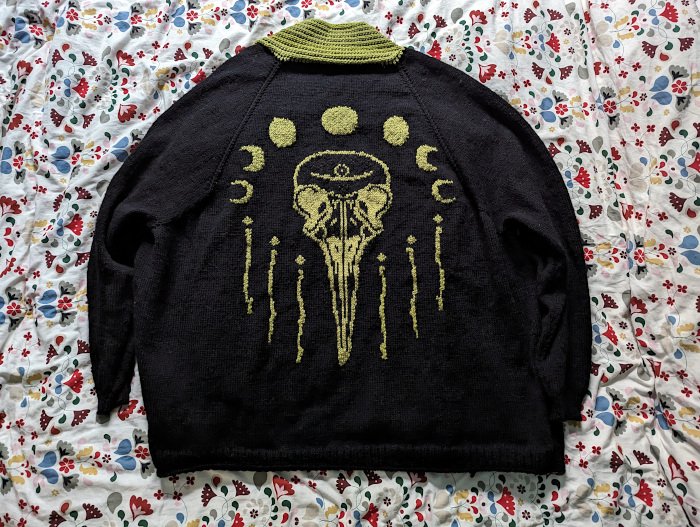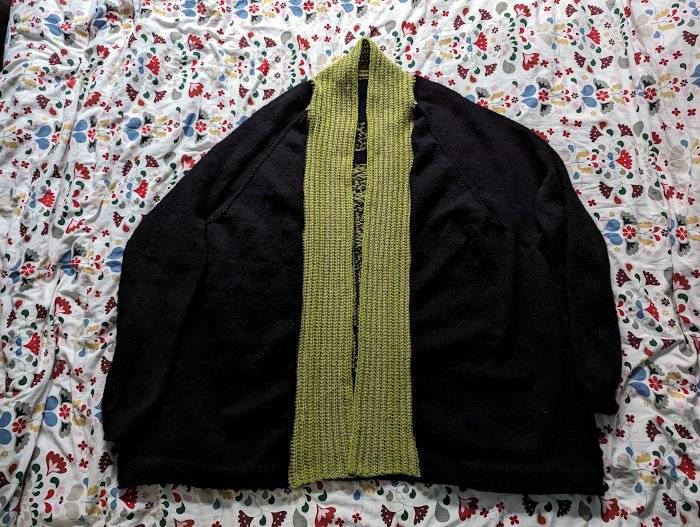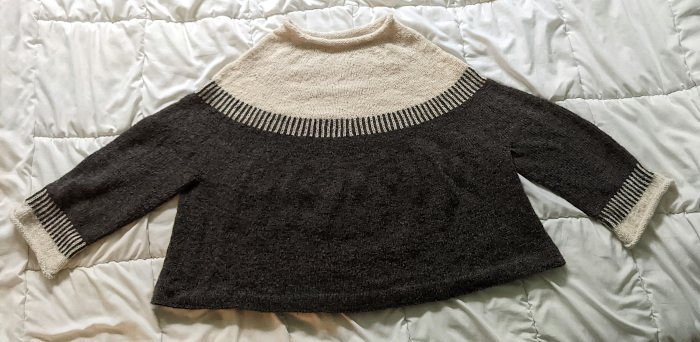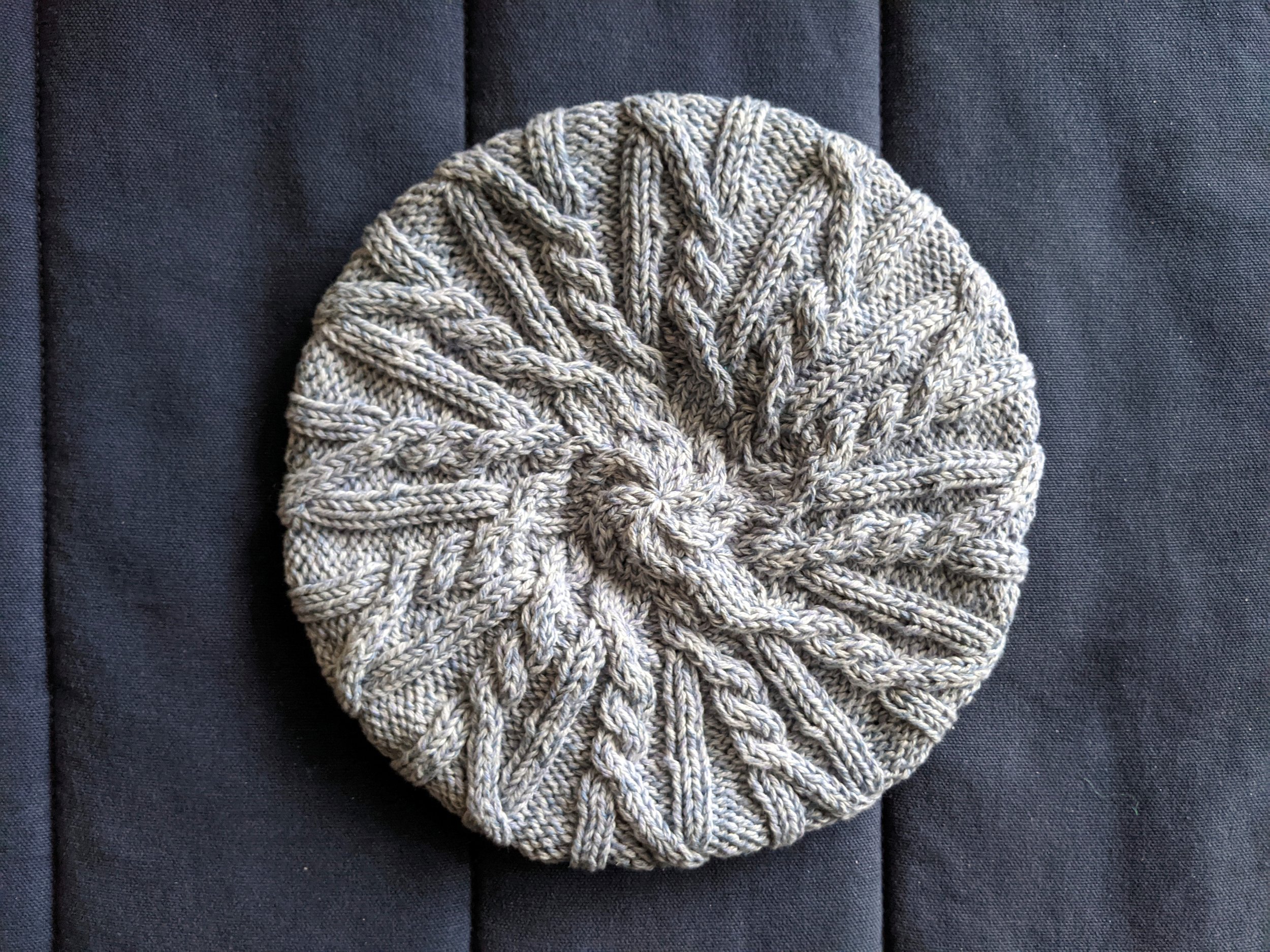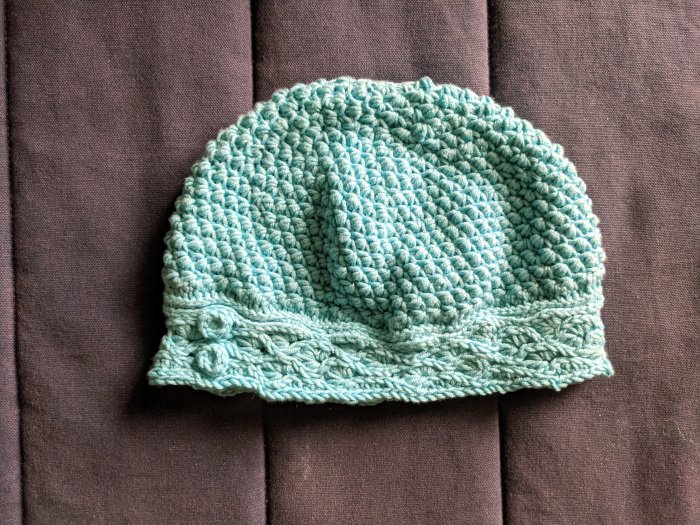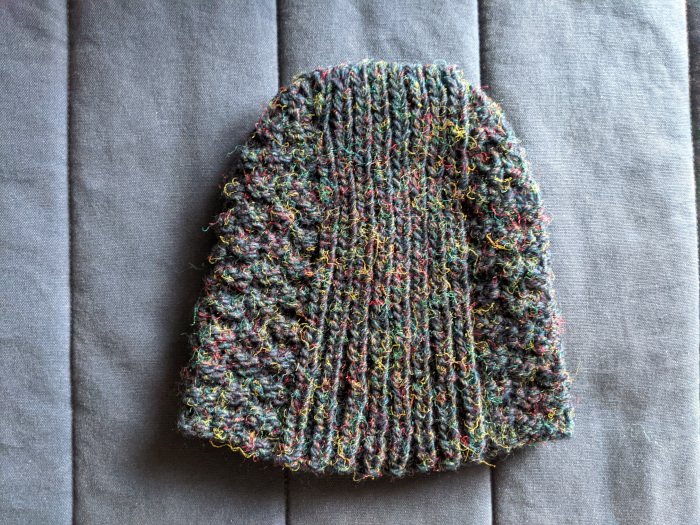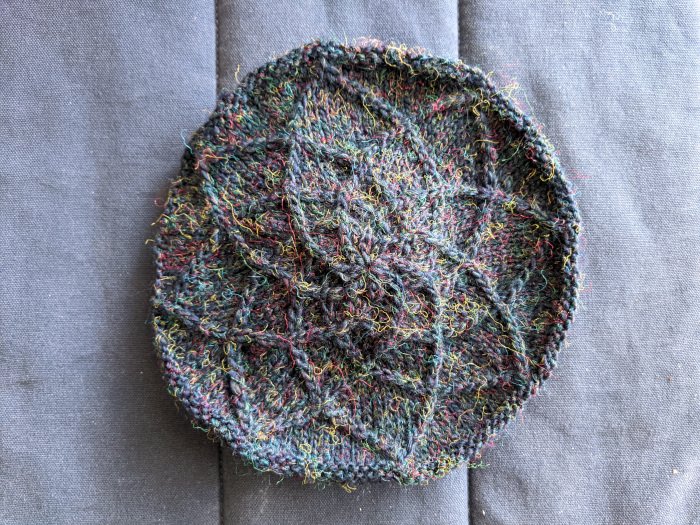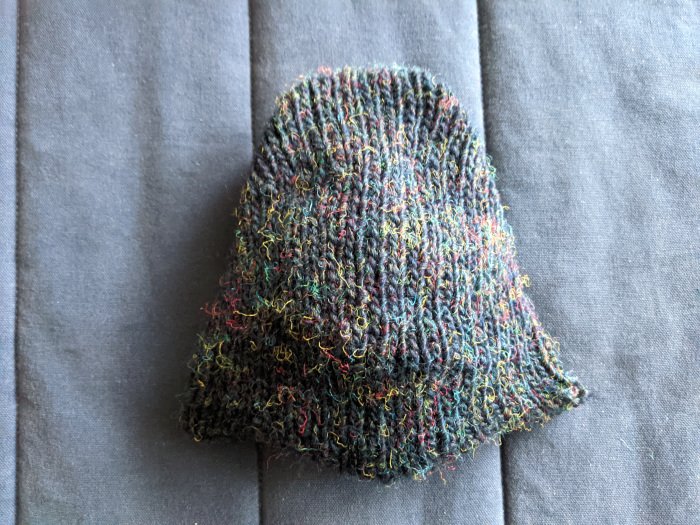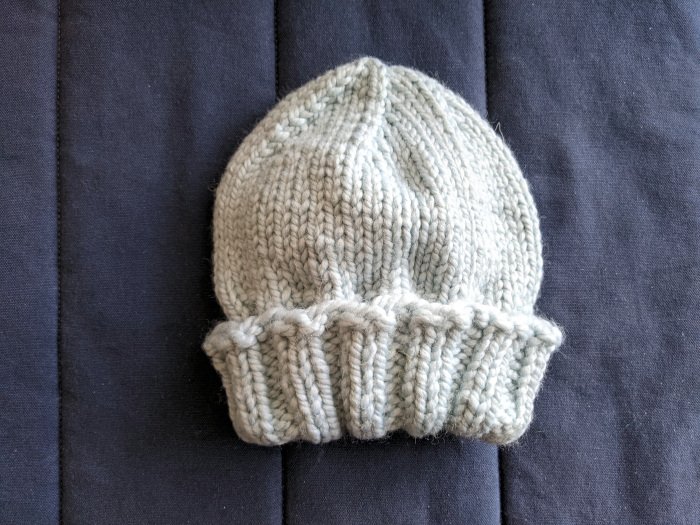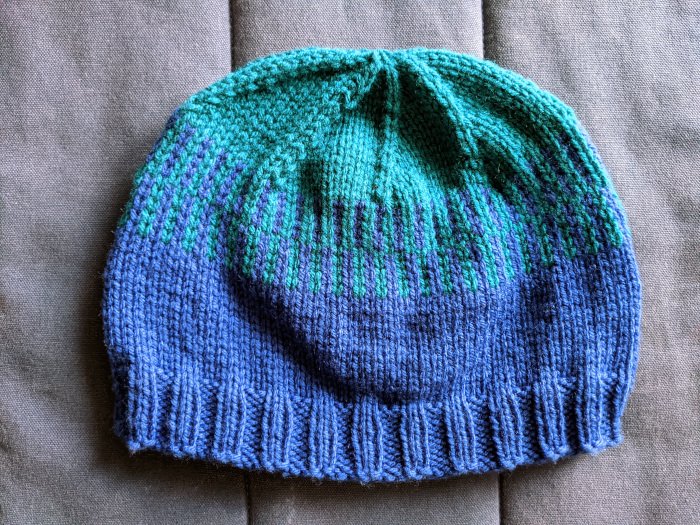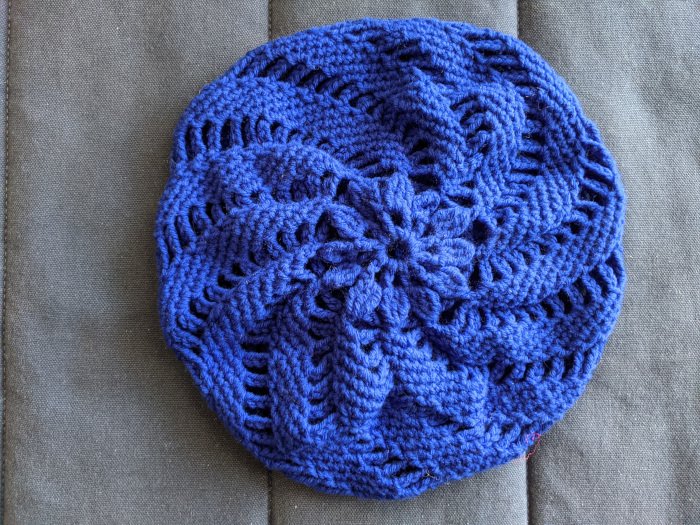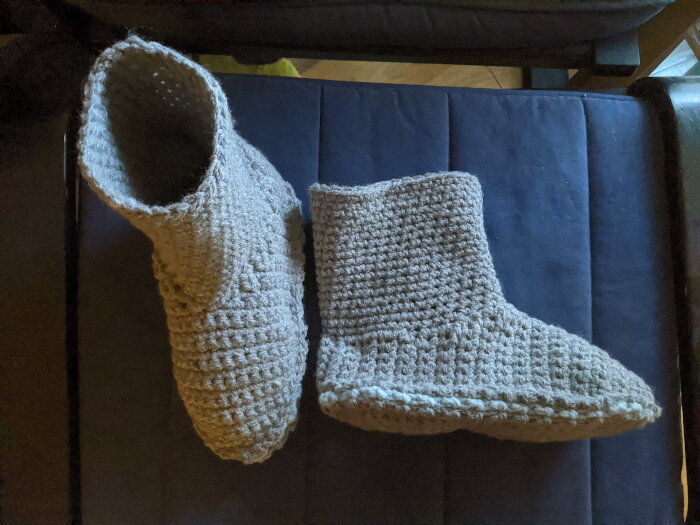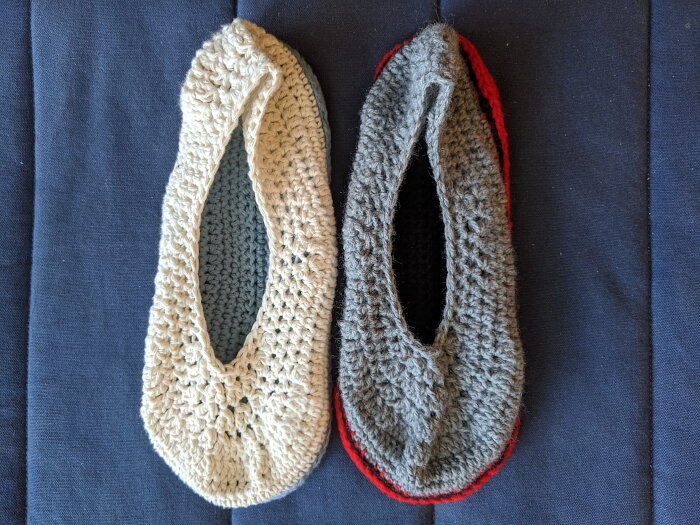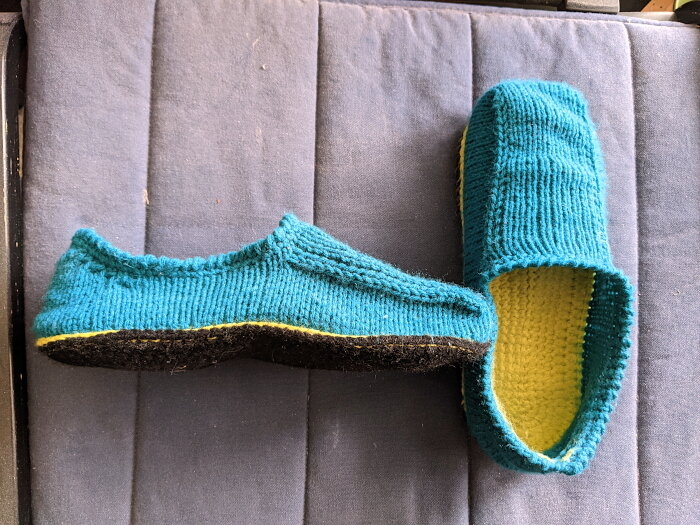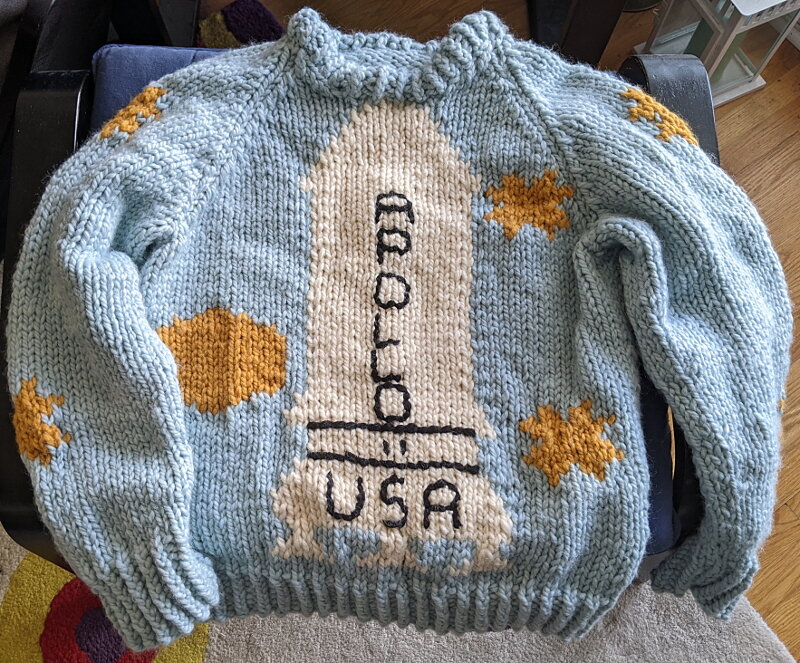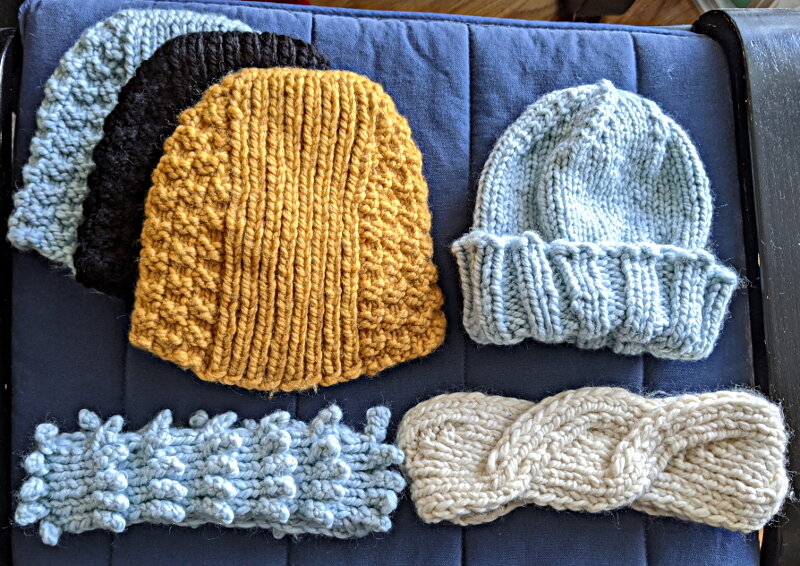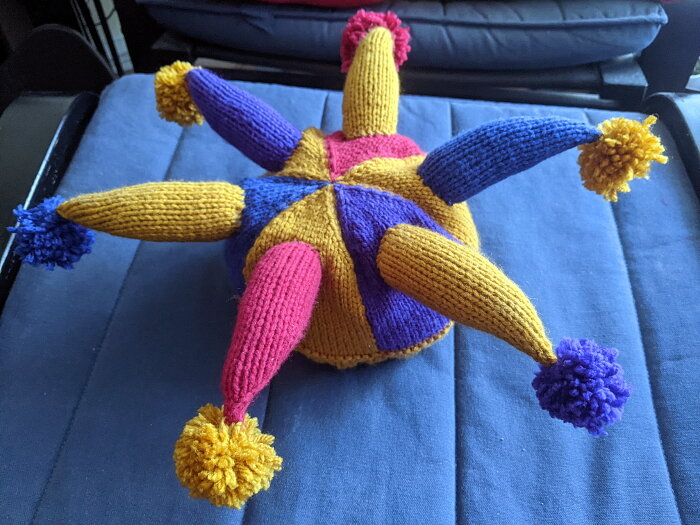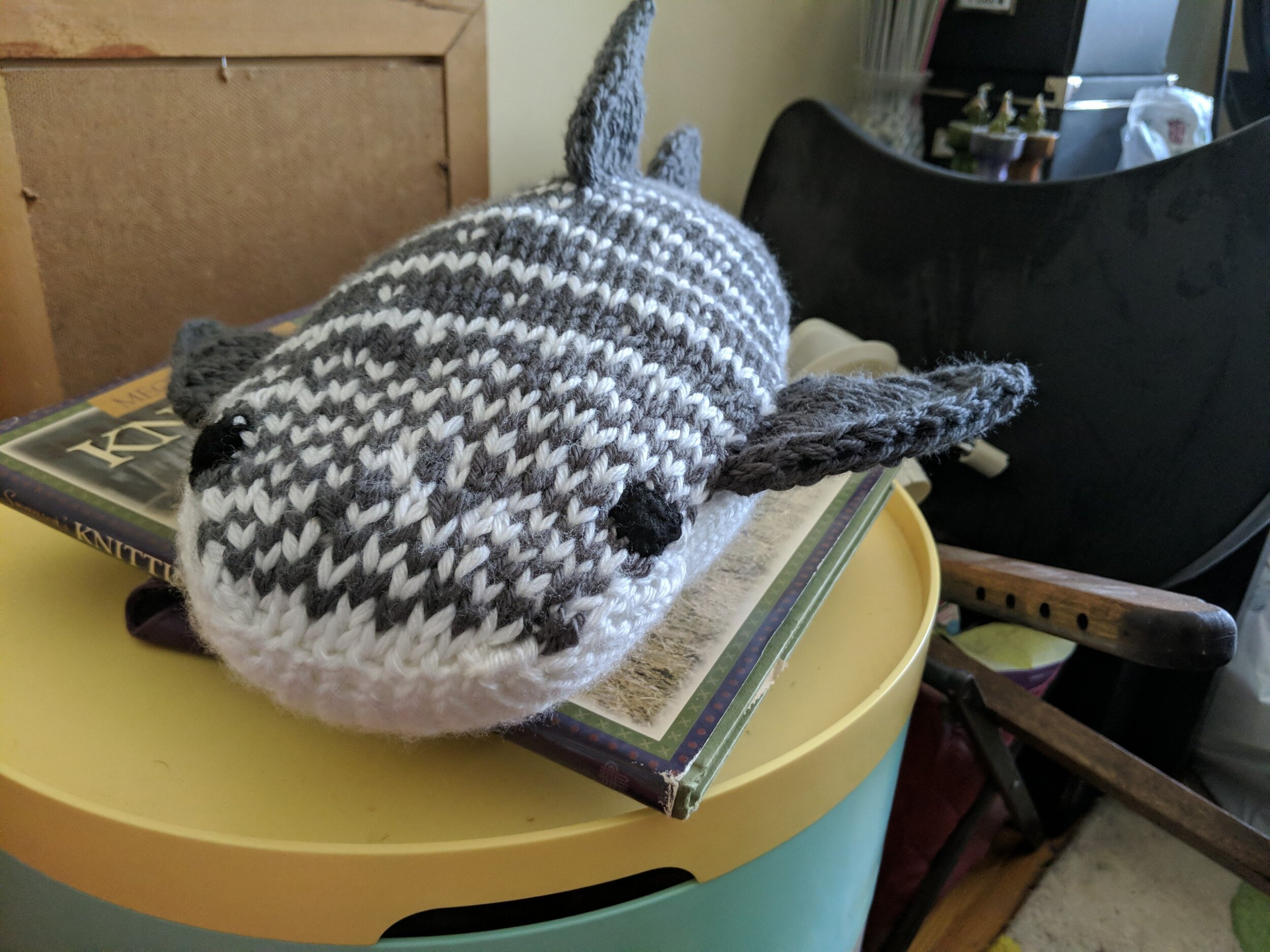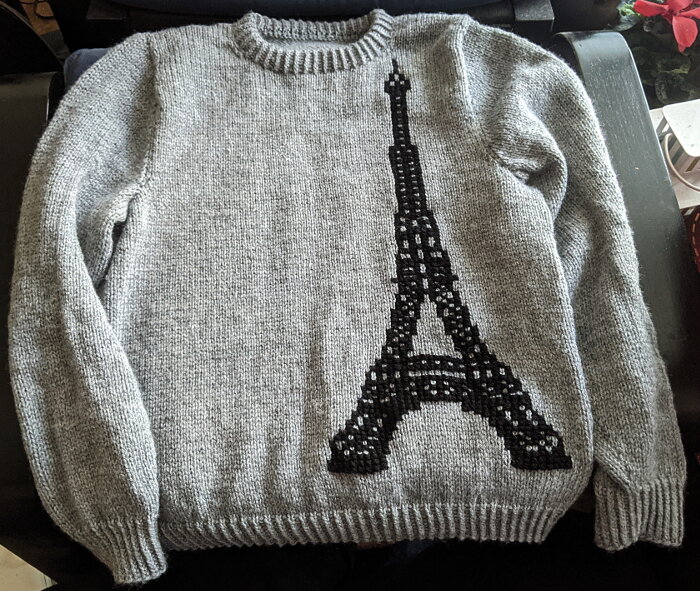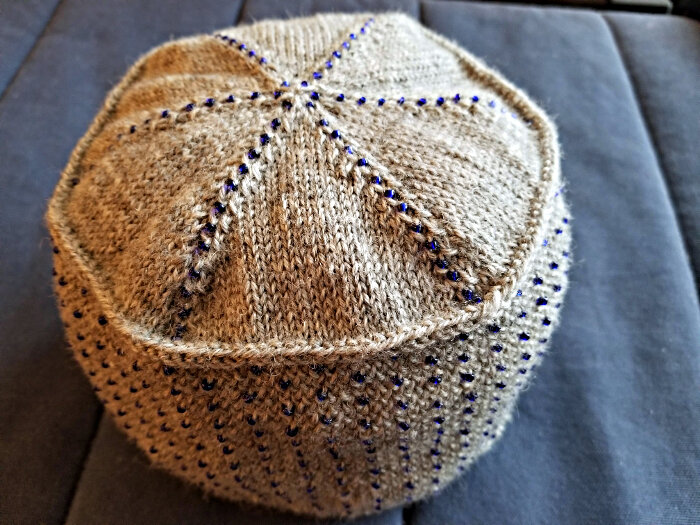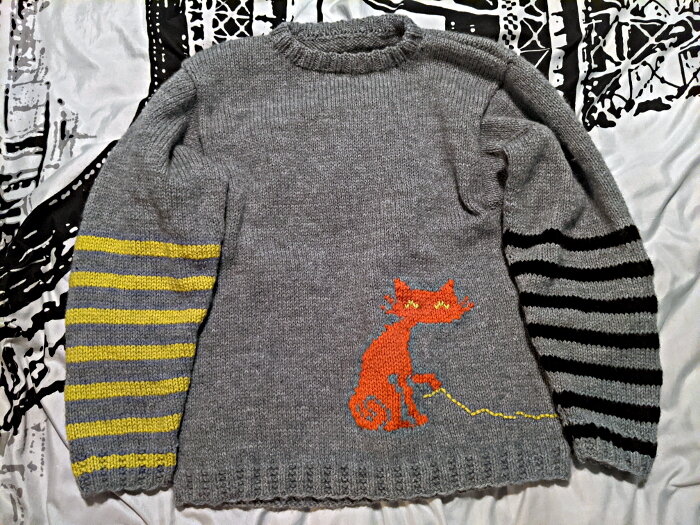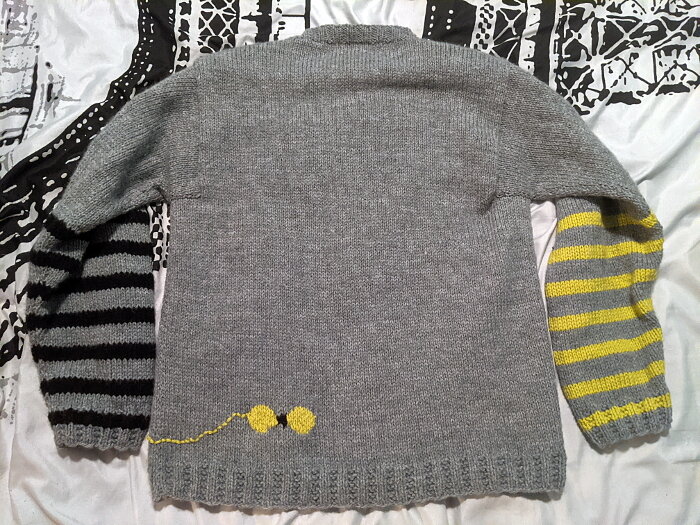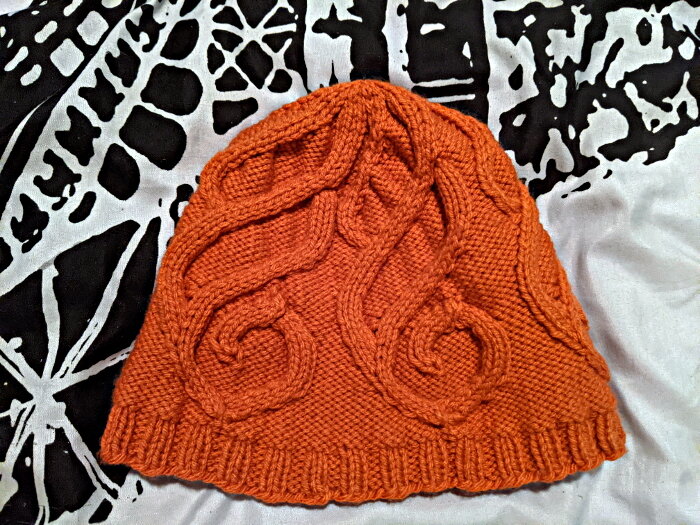This became one of those epic knits for me, one that got considered for “abandon and re-use the yarn” status several times over.
Just for reference, I am 175cm/5’9” and usually take a 2XL in retail clothing pants and tops, or a 3XL in coats and jackets (because they never account for what you’re wearing underneath!). This cardigan goes down almost to my knees and is 4-5 sizes too big for me.
The pattern is The Possibility of Crows by Harper Bee, which I got in kit form from Bistitchual (the pattern links to them since it’s not on Bee’s site). The way the prices and sizing worked out, it made sense to me to just get the largest size and go for the oversized, drapy style I like in these kinds of cardigans anyhow. It might have been overkill, because the armholes go down to my waist, but the “blanket with sleeves” effect is very pleasing, and I hope to get many years of wear from it.
The design is top down, which everyone seems to love but me. My usual objections stand: this got to be a royal pain to cart around when it was closer to done, and I a large percentage of my knitting on public transit or while waiting for other things to happen. I also don’t like working on sleeves while an entire cardigan hangs off them.
Buying the yarn as a kit was also a concern, as sometimes kits are stingy with yarn amounts, so I am please to report it was not the case here. I have two and a bit balls of black left over, and just under one ball of green. I expect to turn them into a watch cap or suchlike after I’ve finished some other things which are already on the go. I did like that Bistitchual lets you choose any combination of foreground and background colours that you like from their stock for the kit.
Modifications: I should have made this into a pieced-and-sewn construction for my own ease of knitting, but I didn’t, and it’s done now. I changed the 1x1 twisted rib edges called for in the pattern to 2x1 mock rib for the body edge (because there’s no point in having an oversized swoopy cardigan pull in at the bottom) and 2x1 real rib for the sleeve cuffs. I also purled the one stich between the sleeve decreases, because for me doing that always leads to a smoother shaping.
I also didn’t quite do the recommended intarsia at the back. The moon phases and candles/wands are each their own intarsia motif, and then the crow’s skull is one big motif. The main body black yarn was carried behind the green throughout. This made each separate motif slightly thicker than the surrounding background fabric, and therefore raises them slightly, kind of an applique effect.
Lastly, I wish I had gone with my gut feeling to change the instruction’s eyelet increases to make-1s, but again, it’s done now and I probably won’t even think about it once I get used to the cardigan as clothing, not project.
Challenges: maybe it was just from working with black and having 500+ stitches on the needles at some points, but I wound up ripping out more than usual for this one. I’ve made way more complicated knits than this, but I just didn’t have the brainpower this time out. The cast-on and initial shaping took 3-4 tries, and then I had to rip out 30+ rows just when the intarsia was getting complicated, because I mis-read the instructions for when the armhole shaping changed increase rates. The last mistake to be fixed was when I was finally done the colour work, spread out the project on a flat surface for the first time in ages (remember I said I frequently knit on the go?), and discovered I’d twisted the fabric when putting the sleeve stitches on hold at the bottom of the armhole. Fixing that required snipping a stitch on the very last row of the armhole at the front, taking out just the one row, untwisting the fabric, and grafting the unravelled row back into existence.
Speaking of armholes and sleeves, thanks to the oversizing, the armhole stop at the top of my hips, I can press my elbows into my sides without touching any of the cardigan. That gives a sort of dolman effect, which works for me, but that the sleeves at this size are 55cm/22” long from the underarm does not. I do have long arms, and back when I was thin my underarm-to-wrist measurement was 47cm/19” or so, but I find now that I’m in plus sizes I don’t need the extra length as much. I should have decreased more frequently to make shorter sleeves.
I had one more surprise working the collar: depending on the light, it looks like there are different dye lots mixed together, although I can’t find a different dye lot in the ball bands (they were in a heap on my coffee table because I did the collar in only three sittings). It doesn’t really show up in natural lighting, and it goes with the overall theme of the cardigan, so I’m not that fussed about it. it makes it less industrial-looking than most clothes, including many hand-knits made from highly-processed yarn.
The temperature dropped in the last couple of days it took me to finish. After working on this project off and on for over a year, I’m glad I get to wear it.
